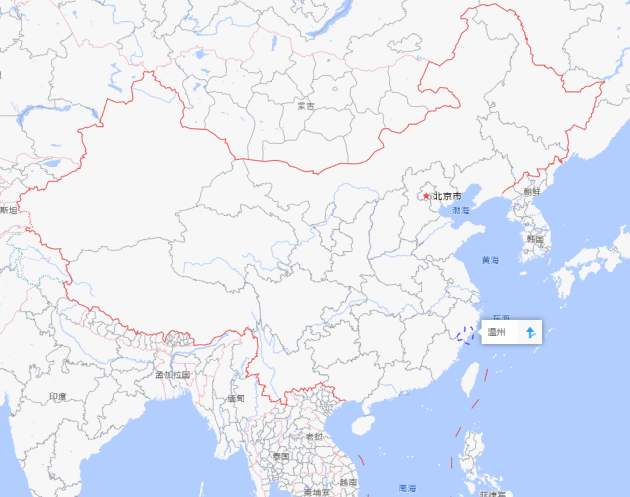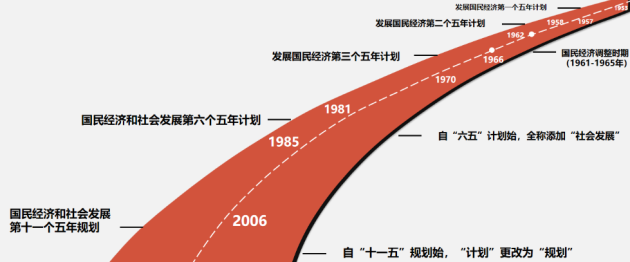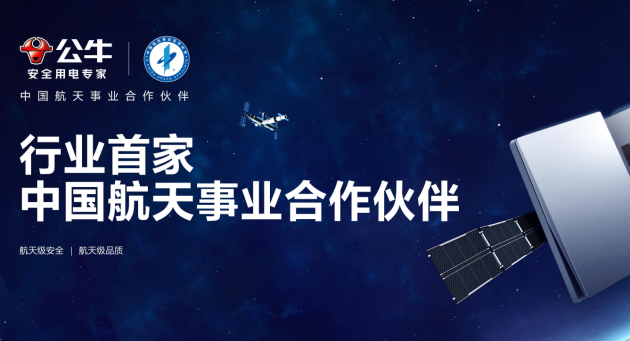Industrial Cluster Model: The Era Opportunity of Wenzhou Model
Wenzhou, located in Zhejiang Province, China, lies on the southeast coast of China.
The Wenzhou Model is a regional economic development model. In simple terms, it refers to the "small commodity" industrial cluster development model, which emerged in Wenzhou after China's reform and opening-up. This model is primarily based on private enterprises and market economics. During the early stages of China's reform and opening-up, the Wenzhou Model attracted significant attention across Chinese society.
The term "small commodity" refers to daily necessities produced by Wenzhou’s private enterprises, typically labor-intensive industries with low technological content and affordable prices. Although these products have low added value, they capitalized on China’s massive consumer market and Wenzhou’s pioneering "institutional time gap," leading to the rapid development of the Wenzhou economy.
The Era Background of the Wenzhou Model
The Wenzhou Model is the result of China’s economic system changes. Under specific historical conditions, it gave rise to particular business opportunities.
Before China's reform and opening-up, Wenzhou had fewer advantages compared to many other regions in China. It had limited natural resources, with only alunite mines available for exploitation. The per capita arable land was the smallest in Zhejiang Province, less than 0.5 acres. The region was densely populated with limited land, necessitating a shift of surplus agricultural labor to the secondary and tertiary industries, prompting the development of non-agricultural industries.
Historically, in addition to farming, Wenzhou people engaged in home-based handicrafts or traveled for business. Small commodity production was mostly family-based. Despite advantages in traditional handicrafts, Wenzhou’s transportation was inconvenient, and being far from major cities, it was difficult to benefit from industrial radiation. As a result, the area produced only simple small products and slowly moved towards modern industry.
In 1978, with the convening of the Third Plenary Session of the 11th Central Committee, China decided to implement the new reform and opening-up policy, and Wenzhou's local government led the people in establishing factories. By 1982, Wenzhou had over 100,000 individual industrial enterprises, accounting for about 10% of the total nationwide, with 300,000 salespeople traveling across the country to sell Wenzhou products.
Stages of Wenzhou's Economic Development
We have summarized the three main stages of Wenzhou's economic development.
Stage 1: The Family Workshop Stage
The first stage of Wenzhou's entrepreneurial development was from the late 1970s to the mid-1980s, with family workshops being the most common form of production during this period.
Wenzhou’s mountainous terrain and limited arable land led to a spontaneous inclination towards privatization and marketization in rural areas. This relatively favorable market economic foundation allowed Wenzhou to bypass the collective township enterprise development process that many other regions in China underwent and directly entered into a period of thriving private enterprises. The “time gap” in institutional choice gave Wenzhou a rare first-mover advantage.
Stage 2: Growth Stage with Companies as the Main Form
The "cooperative joint-stock system" was introduced as part of rural reforms in China, aiming to unite scattered production factors and create new economies of scale, which was proposed in 1985.
In 1993, China enacted the "Company Law," and Wenzhou’s private enterprises quickly evolved into companies and even conglomerates. The cooperative joint-stock enterprises were rapidly replaced because they struggled to establish stable and standardized corporate governance structures, and the decentralized ownership often led to fragmented management, higher management and decision-making costs.
Stage 3: Development Challenges and Diversification Stage
The 1998 Asian financial crisis marked the beginning of Wenzhou enterprises’ mature phase. The sharp deterioration of the export environment caused Wenzhou enterprises to lose their price advantages in international markets. With China further opening the market to private enterprises, Wenzhou's original institutional advantages gradually faded. After a period of rapid growth, Wenzhou's industrial clusters began facing market saturation, product homogenization, and intense price competition, leading to decreasing marginal returns.
In response to these market changes, Wenzhou enterprises shifted from extensive growth to high-quality growth. A few enterprises, leveraging their brand advantages and marketing strategies, created product differentiation, avoiding vicious competition to some extent. These companies were the first to embark on branding and diversification.
A Typical Example of Wenzhou Manufacturing: Lighters
When talking about Wenzhou manufacturing, one must mention Wenzhou lighters. Let’s use this product to illustrate Wenzhou's development.
In the 1980s, lighters became popular in China. At that time, most lighters used in China were imported from Japan or South Korea, and they were expensive. Wenzhou entrepreneurs, with their keen commercial sense, quickly identified the market opportunity. After researching the overseas-produced lighters, Wenzhou’s lighter production quickly entered the market.
Wenzhou people understood that to capture the market, they had to lower prices. The market price of a Wenzhou lighter was only one-third of that of imported lighters.
From 1992 to 1994, the sales of Wenzhou's plastic lighters to the United States skyrocketed to 300 million units, with Wenzhou lighters once holding 80% of the global market share.
Wenzhou’s manufacturing also dominated various niche markets for lighters with rapid R&D. Different materials and styles reflected distinct styles, and the lighters to some extent became symbols of identity for their users.
At the peak of Wenzhou manufacturing, the variety of lighters exceeded 10,000 types. A new product, from design to production, took Wenzhou manufacturers about 25 days, while Japanese or South Korean manufacturers took about 80 days. During the peak of Wenzhou manufacturing, an average of three new lighter models appeared in the market every day.
The Growth and Transformation of Wenzhou Entrepreneurs
The Wenzhou Model involved millions of farmers in entrepreneurship, which meant many early entrepreneurs had low cultural education. At the beginning of the Wenzhou Model, they could adapt to market changes, but as the market economy developed, they had to constantly improve their knowledge and management skills to keep up.
Due to cultural influences, early Wenzhou bosses often kept their businesses closed, unwilling to merge with other companies, and even more reluctant to be acquired or merged, which became one of the main reasons for the stagnation of many Wenzhou enterprises.
However, some Wenzhou entrepreneurs saw the future direction of business development and accelerated their listing. More and more companies entered the capital markets, producing a group of influential Wenzhou entrepreneurs who completed their transformation from farmers to listed companies. By 2023, there were 58 Wenzhou companies listed both domestically and internationally, with 37 listed on China’s A-shares, covering multiple fields such as clothing, food, and industry.
The Family-based Group Development Model in Wenzhou
Wenzhou rose from family workshops and predominantly adopted family-based management. Unity and group development are among the most prominent characteristics of Wenzhou businessmen. When Wenzhou people meet friends, they often bring multiple relatives along. This tendency for whole families or entire clans to gather is a feature rarely seen in other regions.
Of course, family businesses have their limitations. If the main members of the family do not improve their quality and capabilities as the company grows, it can become an obstacle to the company’s development. Family businesses rely on kinship relationships, and once the conflict of interests among family members exceeds the ability to maintain those relationships, the business can split or even collapse.
With the development of enterprises, the shortcomings of family-based management in Wenzhou enterprises became more apparent. Many private enterprises began to establish modern corporate systems and gradually transformed into modern joint-stock companies or listed companies, although they still retained the excellent tradition of family group cooperation.
The Diversification of Wenzhou Capital Investment
Having completed its initial capital accumulation, Wenzhou has a massive amount of private capital, which is invested in various industrial, commercial, and equity investments across the country. Some private enterprises have even ventured into international markets, with vast amounts of capital flowing out, forming industry-specific Wenzhou markets and cross-regional Wenzhou economies.
Besides investments in industry and commerce, we should focus on Wenzhou’s real estate investment groups.
Wenzhou's real estate speculation initially started locally. Between 1998 and 2001, as foreign trade orders declined, large amounts of private capital from Wenzhou were invested in real estate, driving local property prices from around 2,000 RMB per square meter to 7,000 RMB per square meter. In 2001, the first Wenzhou real estate group entered Shanghai, buying over 100 properties in three days, injecting over 50 million RMB into Shanghai's real estate market. Over the next few years, Wenzhou capital invested around 200 billion RMB in real estate across various regions, with Beijing and Shanghai concentrating about 100 billion RMB.
As we’ve discussed, Wenzhou people prefer to work together in groups. Real estate speculation groups are no different. These groups typically consist of relatives and friends, with the smallest groups having two to three people and the largest comprising dozens of people. The dividends are split according to the shares or number of properties owned. With their capital advantage and correct judgment of China’s real estate development trends, Wenzhou speculators managed to buy up numerous quality assets at low prices.
The Historical Opportunity of the Wenzhou Model
The Wenzhou Model represents a historical opportunity for China's light industrial products to go "from nothing to something."
During times of scarce material conditions, the Wenzhou Model, with its cost-effective products and rapidly growing production capacity, made significant contributions to China’s development and participated in the entire process of China’s light industry products going "from nothing to something."
In the inland regions of China at that time, there was a wave of migrant workers heading south to work in places like Wenzhou, where light industry clusters existed. The advantage of low labor costs and raw material cost savings from industrial clusters were also reflected in the Wenzhou Model.
From the perspective of local governments, at a time when China had yet to legally recognize private enterprises, the Wenzhou government encouraged the development of family workshops despite political risks. After policies were enacted, they actively led farmers to open factories, daring to experiment without any reference models. The efforts and foresight of the Wenzhou local government were also key supports for the success of the Wenzhou Model.
Once the quantity of products was sufficient, the inevitable pursuit of quality and brand followed, marking the natural progression of history. When China entered the phase of "quantity to quality" development and Wenzhou lost its labor cost and raw material advantages, it signaled the end of Wenzhou's previous era of opportunity.
The Fighting Spirit of Wenzhou Merchants
The entrepreneurial spirit of Wenzhou merchants is highly commendable. Wenzhou entrepreneurs, whether from ordinary or wealthy backgrounds, display remarkable diligence, a willingness to experiment, and bold innovation.


